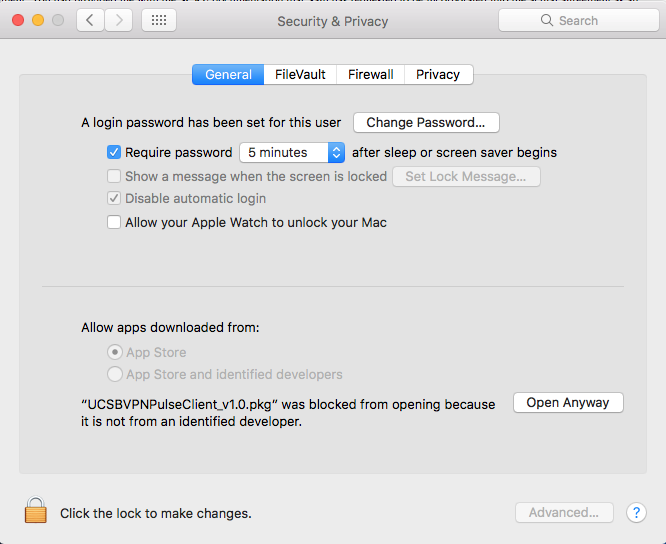Pulse Secure Client for Apple iOS Overview
Pulse Secure client provides Layer 3 VPN connectivity based on SSL encryption and authentication between an Apple iOS device (iPhone, iPad, iPod Touch) and Pulse Connect Secure. Pulse Secure client enables secure connectivity to corporate applications and data based on identity, realm, and role. Pulse is designed to provide battery-friendly connectivity by automatically disconnecting from the VPN when the device is inactive while on Wi-Fi, automatically reestablishing VPN connectivity when the device reactivated, and maintaining connectivity when roaming from network to network. Pulse Secure client is available for download from the Apple App Store.
- Refer to the supported OS list on the FAQ page. Download the Pulse Secure client for MacOS here. Open the package, click Continue, then Install. Note: If you are having trouble finding the file after download, trying looking on your desktop or in the downloads folder located in the Dock. Click Close once installation is.
- Using the Junos Pulse Secure client for Mac OS X 9 –To disconnect, right-click on the Pulse Secure icon in the system notification tray, select the System VPN connection profile, then click Disconnect. 10 –Should you want to close the application, right-click on the Pulse Secure icon in the system notification tray, then select Exit.
Note: Mobile client features are updated frequently and each mobile client has a release number that is independent from the other clients and from the Pulse for Windows and the Pulse for Mac clients. We recommend that users upgrade their mobile client to the latest release to ensure that all features described in this guide are supported on the devices.
The Pulse Secure Mobile Supported Platforms Guide, which is available at https://www.pulsesecure.net/techpubs/pulse-client/pulse-secure-client-mobile lists the mobile device OS versions supported by Pulse and the security features supported on each mobile device OS.
ScreenOS What is NSRP split brain? Why are both of my firewalls in the Master state? 2020.09.23 What is Continuity of Operations (COOP)? 2020.09.23 Are there certification training centers in the Latin America region? 2020.09.23 Sky Enterprise ZTP with SRX3xx Shows 'Configuration Failed' state 2020.09.23 Junos TCP/UDP port numbers for MCLAG & ICCP (Inter-Chassis Control Protocol.

The Pulse Secure VPN app supports the following features:
Download Pulse Secure For Mac
- Full Layer 3 tunneling of packets
- UDP/ESP and NCP/SSL modes
- Authentication by all authentication options available on the Pulse Connect Secure server
- Certificate authentication followed by any other form of authentication
- Multi-factor authentication (cascading two different types of authentication)
- Host Checker
Note: A Host Checker policy that is configured for a VPN tunnel is not triggered if the VPN is launched automatically by VPN on Demand on iOS. If the VPN session is started through the Pulse client, Host Checker policy is correctly applied.
- Split tunneling modes:
- Split tunneling disabled with access to local subnet
- Split tunneling enabled

Pulse Secure Mac Client Download

- Apple VPN on Demand
A VPN on Demand configuration enables an iOS device to automatically initiate a VPN connection when any application running on the phone initiates a connection to a host in a predefined set of hosts. A VPN on Demand connection uses client certificate-based authentication so the user does not have to provide credentials every time a VPN connection is initiated.
Note:
When you configure VPN on Demand, you must create an exception for your Pulse Connect Secure server hostname. For example, if the hostname is sslvpn.example.com and you want Pulse clients to automatically establish the VPN whenever requests are made for hosts in the example.com domain, the VPN on Demand configuration should contain the following rules:
- If domain name = sslvpn.example.com, then never initiate VPN connection.
- If domain name = example.com, then always initiate VPN connection.
There different methods for creating VPN on Demand connections:
- Create and manage VPN on Demand configurations from within the Pulse Secure client for iOS client.
- Use the iPhone Configuration Utility. For complete information about how to create a VPN on Demand configuration using the iPhone Configuration utility, see the iPhone OS Enterprise Deployment Guide, which is available at www.apple.com.
- Secure Mail
Pulse Secure Client Install
An ActiveSync proxy on the Pulse Connect Secure server provides secure email services to Pulse iOS clients. The secure mail service encrypts email body content and attachments, supports email forwarding, and allows the Pulse administrator to quarantine the iOS device. Users view encrypted email body with any native iOS email client. Encrypted attachments are displayed by the secure viewer in the Pulse iOS client.
